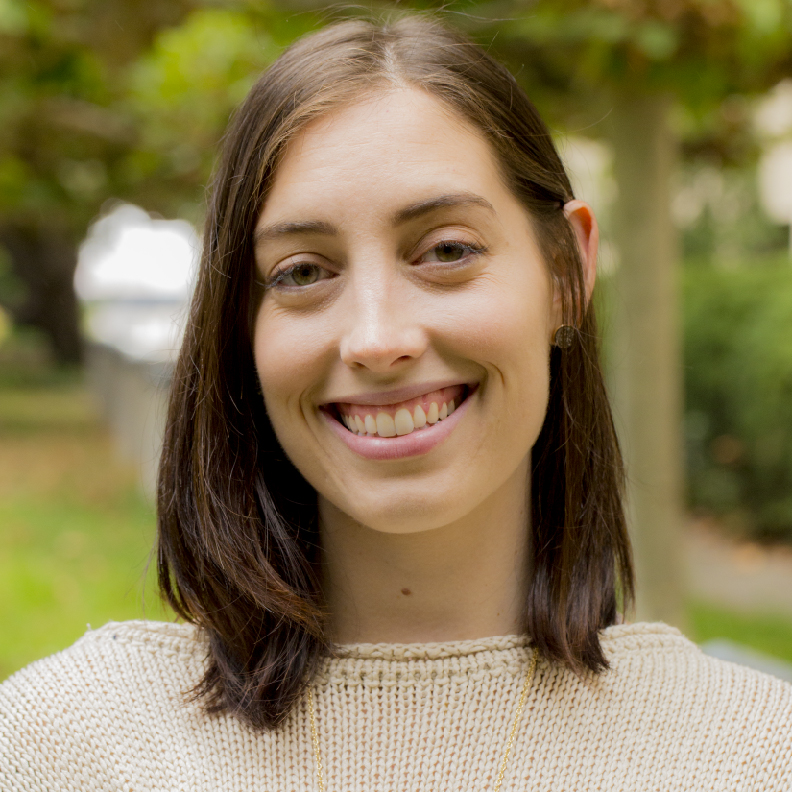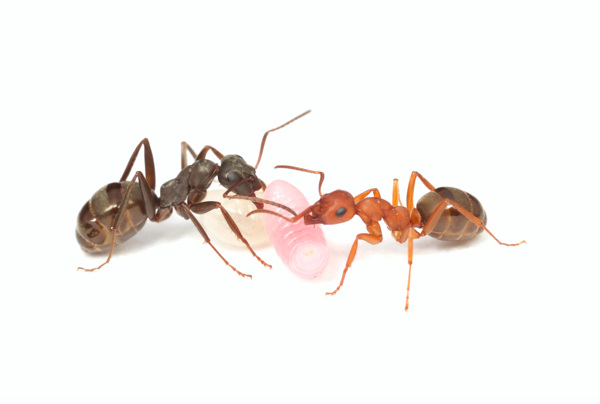Dissertation Title
Genetic, chemical, and ecological patterns of host specificity in the North American facultative kidnapper ant, Formica aserva

A little more about Kelsey:
I have spent much of my adult life rolling logs to uncover the tiny insect dramas beneath the leaf litter. The busy, sometimes sinister lives of ants filled me with the questions that led me to develop my dissertation research on the kidnapping ants of California. Kidnapper ants raid and capture the pupae of neighboring ant colonies and rear these stolen individuals into adult, host workers that will contribute labor to the parasitic nest. With a deep love of behavioral ecology, I dove into the specificities of parasite and host relationships within these ant populations. I soon broadened my work to include an exploration of the beautifully complex world of chemical communication that defined these relationships.
Though my time in the lab was filled with the excitement of uncovering the layers of kidnapping behavior in ants, it was the time I spent watching these ants interact and solve problems in the field that propelled my research ideas and led me to realize the importance of natural history. The more I learned about the lives of ants, the more I wanted to share it with the world. For me, this meant entering a new conversation outside of academia. I taught lessons on ant communication in fourth grade classrooms around the Bay Area, spent late nights conversing with visitors at Cal Academy’s NightLife events, and collaborated with the crew members of KQED’s Deep Look Series to create a mini-documentary on kidnapper ants, made accessible to a wide audience. The more I talked with the public about science and insects, the more relevant my work felt. Moving forward, I plan to incorporate my skills as a scientist with my love of teaching in a career that focuses on science communication.
Now, I get to continue this journey of exploration with my young daughter as we peer under stones and follow the invisible trails of ants with our fingers. I am so grateful for this experience and the flexibility and support of my advisor, Neil Tsutsui, as I explored arenas outside of academia and went on to start a family.
As I close this chapter, I will always look back and be empowered by that feeling that comes after a long day in the field when I would look around at the towering sugar pines and watch the sun dip below a snow capped peak of the Sierra Nevada mountain range and think, “Yeah, this is my nine to five!”
Acknowledgement by Kelsey:

My faculty advisor, Neil Tsutsui, for inspiring the focus of my research and my husband, Matt, for being a never ending source of support and for joining me on the rollercoaster that is the PhD process.
Research Funded by:
– Essig Museum Walker Fund
– Lewis & Ann Resh Award for Entomological research
– Department of Environmental Science, Policy and Management: Division of Organisms & Environment
– Bob Lane and Sandy Purcell
– American Philosophical Society: Lewis and Clark Fund for Exploration and Field Research
